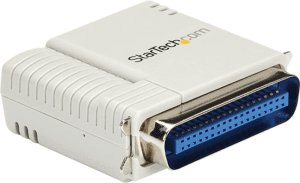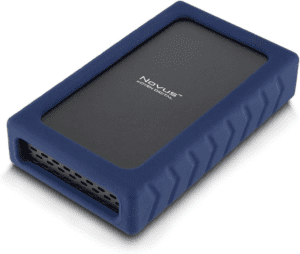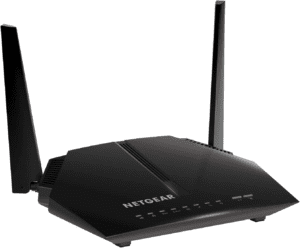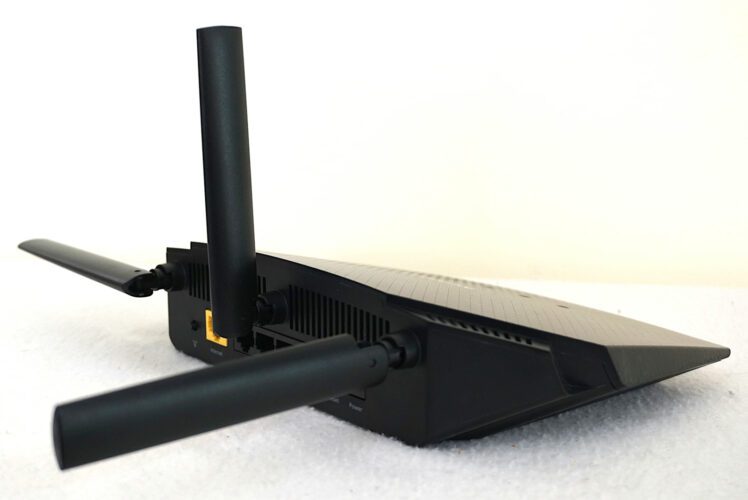StarTech.com StarTech.com 1-Port 10/100 Mbps Parallel Network Print Server.

Do you need to share a printer with multiple users on your network? If so, you need a print server! StarTech.com offers a great option with their 1-Port 10/100 Mbps Parallel Network Print Server. This device allows you to connect one printer to your network and share it with multiple users. It is uniform with Windows, Mac, and Linux systems, making it a versatile option for any home or office. Plus, the price is unbeatable!
Features of StarTech.com StarTech.com 1-Port 10/100 Mbps Parallel Network Print Server.
- The StarTech.com print server offers an easy and cost-effective way to share a parallel printer on your network.
- This compact print server connects to a single parallel port and supports Windows and Linux operating systems.
- It features built-in web administration for easy setup and configuration and can be managed remotely using the included management software.
The Advantages of Using a Print Server
Introduction
A print server is a networked computer responsible for managing one or more printers. Print servers offer several advantages, the most notable of which are listed below.
Print servers centralize printer administration. This means that it is easier to keep track of all the printers on the network and makes it easier to make changes when necessary. For example, if you need to install a new printer driver, you can do so from the print server rather than installing the driver on each computer.
Print servers can also provide additional security. If you want to prevent unauthorized users from accessing certain printers, you can set up permissions so that only authorized users can connect to the printer. This can be done at the print server level rather than at the individual computer level.
Finally, print servers can improve printing performance. Print servers can ensure that print jobs are completed quickly and efficiently by optimizing printer pooling and job priority.
Parallel vs. USB Print Servers
There are two main types of print servers: parallel and USB. Which one you use will depend on the type of printer you have and your personal preferences. Below, we’ll look at the main differences between the two types of print servers.
Parallel print servers connect to the printer via a parallel port. Parallel ports are found on most older printers; however, they are not found on newer printers. A parallel print server is your only option if you have an older parallel printer. If you have a newer printer with no parallel port, you’ll need to use a USB print server (more on that below).
While parallel ports are not found on newer printers, they offer advantages over USB ports. For one thing, data transfer rates are typically faster with parallel ports than USB ports. In addition, most computers have a built-in parallel port; as a result, you won’t need to purchase any additional hardware to use a parallel print server. Finally, most operating systems support parallel ports out of the box; you won’t need to install any drivers to use a parallel print server with your computer.
USB print servers connect to the printer via a USB port. All modern printers have USB ports; if you have a modern printer, you’ll need to use a USB print server to connect it to your network. While USB ports are not as fast as parallel ports, they offer some advantages. For example, since most computers already have built-in USB ports, you won’t need to purchase any additional hardware to use a USB print server—unlike with a parallel print server where you’ll need to purchase an external similar port adapter. In addition, since all modern operating systems support USB out of the box, you won’t need to invest any time in setting up drivers for your USBprintserver. Simply plug it into your computer, and it should work right away. However, if you’re using an older operating system, you mayneedtoinstall a driver inorderforityouuseyourUSBprintserver.
Conclusion:
Using a print server in your office or workplace has many benefits. Print servers can increase productivity by allowing multiple users to share the same printer, and they can also save your business money by reducing paper and toner costs. Print servers add a layer of security to your network by protecting sensitive information. If you’re looking for ways to improve your office’s efficiency and security, investing in a print server is a great place to start!






